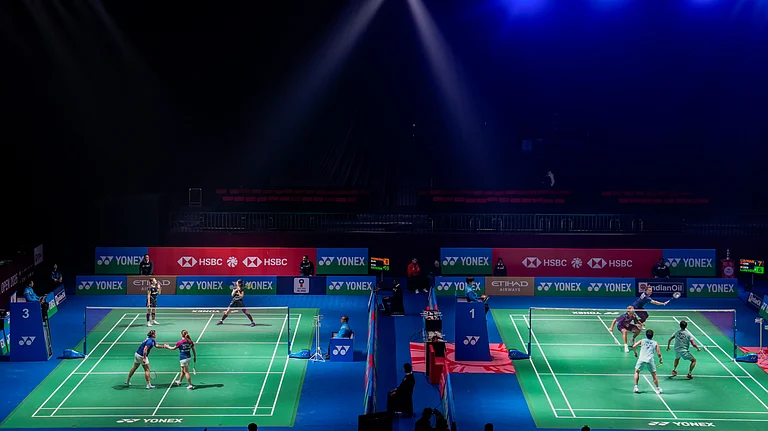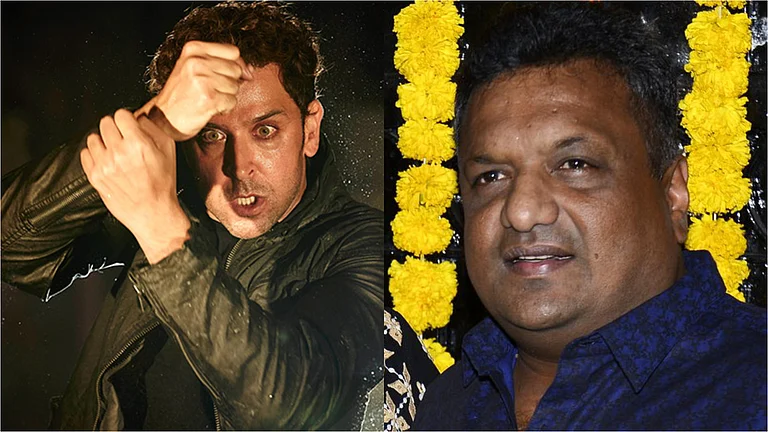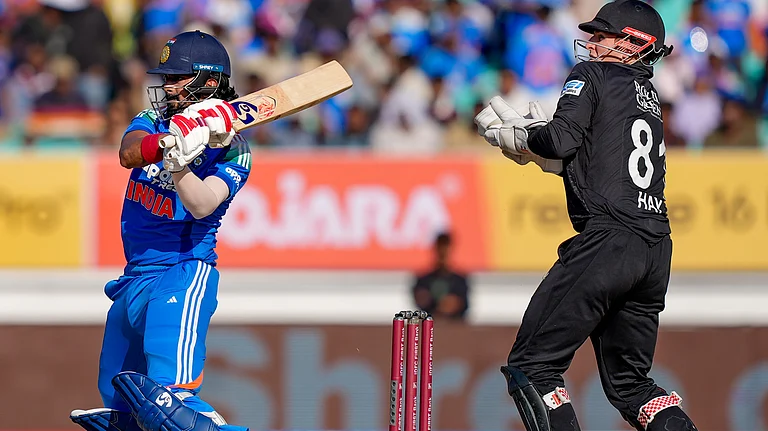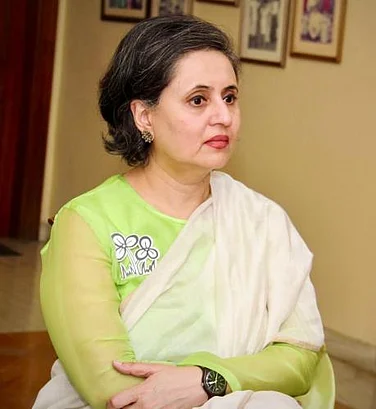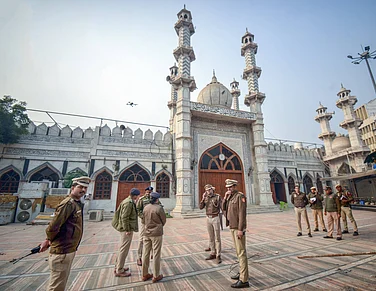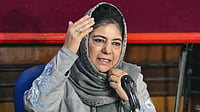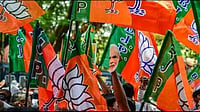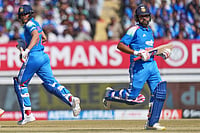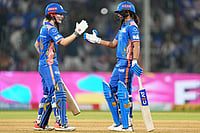The December 1955 Kashmir visit by Nikita S. Khrushchev, the then first secretary of the Soviet Communist Party, and Nikolai A. Bulgania, the former Soviet Premier, was a momentous occasion in the political landscape of the valley. The visit had come in the backdrop of Pakistan’s vehement protests.
The highly-publicised visit saw Bakshi Ghulam Mohammad, the then Prime Minister of Jammu and Kashmir, taking the visiting dignitaries around Srinagar to showcase the economic developments in the valley. At a reception hosted by Bakshi, Khrushchev dropped the biggest bomb shell on Kashmir, denouncing the two-nation theory and terming Kashmir an “internal affair of India”.
The growing friendship between India and the former Soviet Union was captured in an iconic photograph: Bakshi and Khrushchev feeding each other ghustaba, tender meatballs that form the finishing dish served in the famed Kashmiri wazwan.
In October 2004, wazwan stirred the political pot once again. A 16-member delegation from Pakistan had visited Kashmir then, widely believed to have been backed by the US to find a solution to the Kashmir issue under the “four-point formula” proposed by then Pakistani president General Musharraf.
The delegation of journalists and activists was received warmly in Srinagar by mainstream political leaders—including chief minister Mufti Mohammad Sayeed and opposition leader Omar Abdullah—with elaborate wazwan preparations. Separatist leaders Syed Ali Geelani and Yaseen Malik also hosted the team but not with wazwan. However, not all were impressed. Hardline separatists accused the delegation of coming to Kashmir just for having wazwan which left the visitors fuming.
It was Yaseen Malik who told the visiting Pakistani delegation that they are in Kashmir to taste Wazwan. It created a big issue. Journalists Imtiyaz Alam, Ejaz Haider, and Nusrat Javed walked out of the meeting and refused to eat food.
Over the years, wazwan has become the leitmotif of Kashmir, serving not just its culinary role but also turning into a political melting pot in the troubled valley. It has now become the focal point in a clash of ideologies that has sparked a “food war” across the country. And there is even talk about turning the elaborate spread consisting mostly of meat dishes into a vegetarian fare.
The latest move came from filmmaker Vivek Agnihotri. In January 2019, Agnihotri was in Srinagar for his film The Kashmir Files. The filmmaker shared a picture of vegetarian thali and wrote, “Nobody knows how to make a vegetarian wazwan in Kashmir. But I am here to bring about a change. #TheKashmirFiles.” His tweet didn't go down well with Kashmiris and several netizens reminded him that the dish, which is part of Kashmiri Muslim cuisine, doesn’t have a vegetarian alternative. After the outrage, Agnihotri deleted his tweet.
Wazwan—which comes from the Kashmiri words waz (cook) and wan (to spread)— is a traditional Kashmiri feast served at weddings and other festivals and can include up to 36 dishes. Considered an art and a matter of pride in Kashmiri culture and identity, wazwan is prepared by specialist cooks, commonly known as waza. Prepared in special nickel-plated copper vessels known as daegs, between 10 to 36 dishes of meat are cooked overnight under the supervision of the vasta waza (master chef). Though there are no set rules about the dishes in wazwan, Kashmiris follow a common, widely-acknowledged menu.
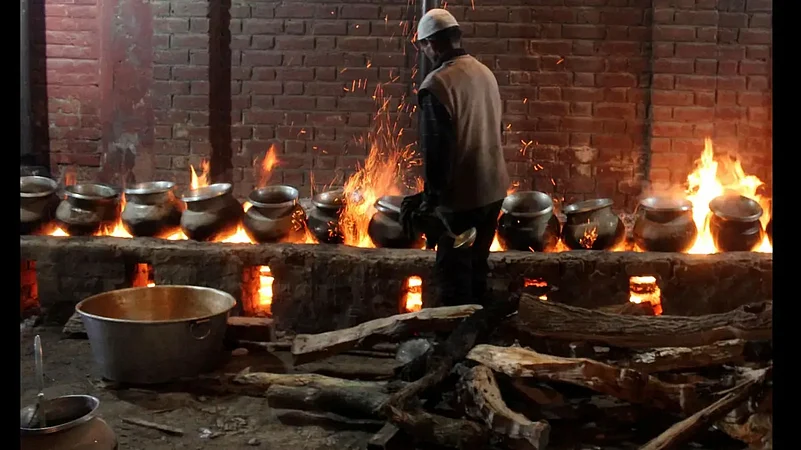
Guests are seated in a group of four on a dastarkhwan or sheet in a tent or big hall, and they share the meal in a tarami. Tarami is a large, round engraved copper platter covered by a cloche, or sarposh. The first course consists of seekh kababs (minced meat roasted on skewers over hot coal), tabakh maaz (a glossy meat made of lamb ribs, fried thoroughly and served in dry form), a daeni phoul (a large mutton piece) and two halves or two whole chicken sprinkled with chopped coriander and melon seeds.
Then comes methi (a stew made with lamb stomach), rista (meatballs in red gravy), rogan josh or red lamb curry, dhaniwal korma (mutton cooked in a lot of coriander). Then comes marchhwangan korma (a fiery hot mutton cooked with Kashmiri red chilli).
It is followed by aab gosht (sheep ribs cooked in a milk-based gravy and flavoured with green cardamoms and saffron) and Yakhni, a yogurt-based curry. Yakhni is the finishing dish served in wazwan before gushtaba is served. Gushtaba is a dish of minced mutton balls cooked in curd and spices. The mutton dishes are served with rice or flat bread.

There are several theories about the origin of wazwan. Many argue that this grand feast came to the Valley from Iran during the time of Sultan Zain ul Abideen (1420-1470 ), the eight king of Kashmir also known as Budshah (the biggest king). However, some point out that since there is no wazwan-like feast in Iran, it could not have originated there.
Another theory is that wazwan is a mix of different cultures, especially Central Asian countries. “Wazwan evolved from the caravans of merchants, saints and other travellers who poured into Kashmir from the sultanate period onwards. They came from many trading and scholarly communities from places as far as present-day Armenia, Egypt, Arab, Iran and other central Asian countries including Afghanistan. Local influences have also been there,” says Saleem Beg, head of INTACH’s Kashmir chapter.
While Agnihotri called for vegetarian wazwan as a part of new food vigilantism prevalent in India, a serious effort had been made previously to phase out wazwan.
On February 29, 1960, Ghulam Mohammad Sadiq was appointed as the Prime Minister of J&K. He was the first leader from the Congress to rule and govern the undivided state. He was at the helm for over a decade, first as the Prime Minister and later as chief minister till December 12, 1971. Sadiq was considered close to communists and believed in socialist ideals. He considered wazwan a vestige of aristocrats of Kashmir and made serious attempts to phase out wazwan.
According to Kashmiri poet Zareef Ahmad Zareef, Sadiq wanted to buy all the utensils from the wazas to put them in a museum. He even gave permits to wazas to drive minibuses. But the attempt failed as it was resented by the people. Sadiq relented and asked for guest control during the wedding wazwan. Those days more than 100 guests were not allowed.
Kashmiris are voracious meat-eaters. Jammu and Kashmir annually consume 600 lakh kg of mutton of which 350 lakh kg are imported from other states. J&K every year also imports around 150 to 300 lakh kg of mutton, mostly from Rajasthan. Sheep, goat meat consumption in Kashmir is witnessing a constant increase. An average middle-class marriage requires about five quintals of mutton and one quintal of poultry.
Kashmiri Muslims, however, turn vegetarian to observe the annual festival of revered saints in Srinagar and south Kashmir. On the ‘urs’ or death anniversary of Hazrat Baba Dawood Reshi, commonly known as Batamaloo Sahib, a 17th-century saint, people skip meat preparations and even consumption of onions. The urs is observed either in the last week of March or the first week of April.
During this time people host special parties where only vegetarian food is served. Some families hire wazas to prepare big vegetarian feasts.
Similarly, a large number of people in the Anantnag district in southern Kashmir, quit eating meat as a mark of respect for Baba Hardi Reshi, popularly known as Raeshmol Saheb, a 16th century mystic. In Anantnag and adjoining areas, rarely is a butcher shop open during these seven days.







